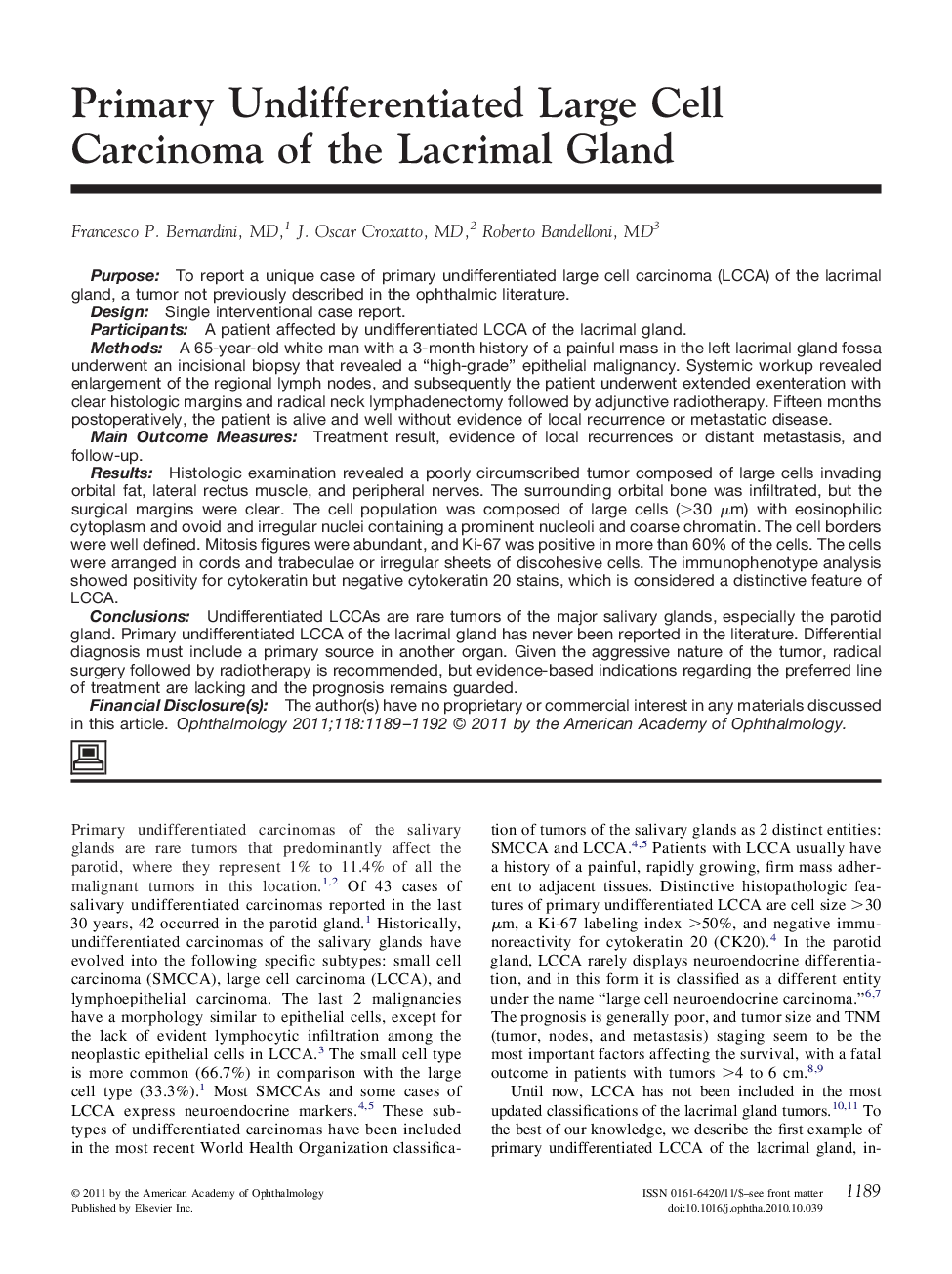| Article ID | Journal | Published Year | Pages | File Type |
|---|---|---|---|---|
| 4027979 | Ophthalmology | 2011 | 4 Pages |
PurposeTo report a unique case of primary undifferentiated large cell carcinoma (LCCA) of the lacrimal gland, a tumor not previously described in the ophthalmic literature.DesignSingle interventional case report.ParticipantsA patient affected by undifferentiated LCCA of the lacrimal gland.MethodsA 65-year-old white man with a 3-month history of a painful mass in the left lacrimal gland fossa underwent an incisional biopsy that revealed a “high-grade” epithelial malignancy. Systemic workup revealed enlargement of the regional lymph nodes, and subsequently the patient underwent extended exenteration with clear histologic margins and radical neck lymphadenectomy followed by adjunctive radiotherapy. Fifteen months postoperatively, the patient is alive and well without evidence of local recurrence or metastatic disease.Main Outcome MeasuresTreatment result, evidence of local recurrences or distant metastasis, and follow-up.ResultsHistologic examination revealed a poorly circumscribed tumor composed of large cells invading orbital fat, lateral rectus muscle, and peripheral nerves. The surrounding orbital bone was infiltrated, but the surgical margins were clear. The cell population was composed of large cells (>30 μm) with eosinophilic cytoplasm and ovoid and irregular nuclei containing a prominent nucleoli and coarse chromatin. The cell borders were well defined. Mitosis figures were abundant, and Ki-67 was positive in more than 60% of the cells. The cells were arranged in cords and trabeculae or irregular sheets of discohesive cells. The immunophenotype analysis showed positivity for cytokeratin but negative cytokeratin 20 stains, which is considered a distinctive feature of LCCA.ConclusionsUndifferentiated LCCAs are rare tumors of the major salivary glands, especially the parotid gland. Primary undifferentiated LCCA of the lacrimal gland has never been reported in the literature. Differential diagnosis must include a primary source in another organ. Given the aggressive nature of the tumor, radical surgery followed by radiotherapy is recommended, but evidence-based indications regarding the preferred line of treatment are lacking and the prognosis remains guarded.Financial Disclosure(s)The author(s) have no proprietary or commercial interest in any materials discussed in this article.
